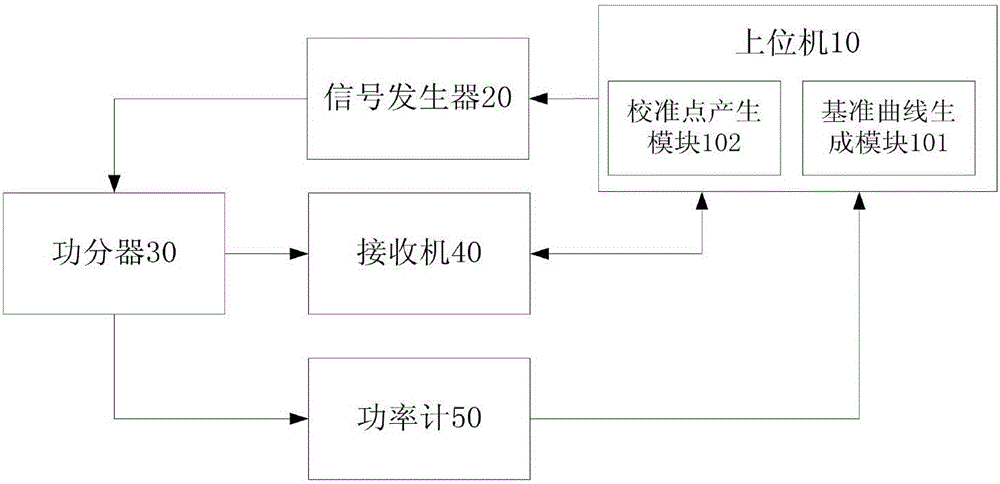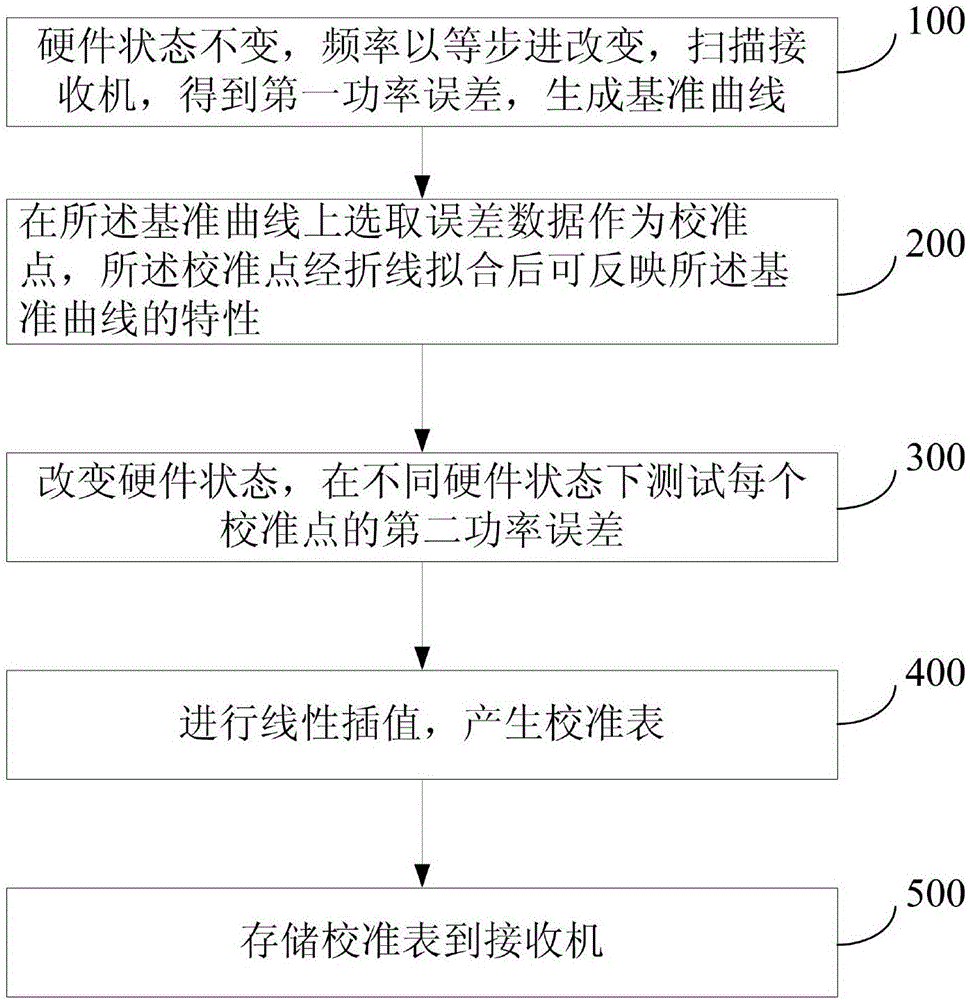Automatic calibration method and apparatus for receiver's amplitude-frequency response
An amplitude-frequency response and receiver technology, which is applied in the field of receiver amplitude-frequency response automatic calibration, can solve the problems of unstable signal source, missing intermediate errors, and long calibration process, so as to enrich the power error database and ensure measurement accuracy , Calibration point selection reasonable effect
- Summary
- Abstract
- Description
- Claims
- Application Information
AI Technical Summary
Problems solved by technology
Method used
Image
Examples
Embodiment 1
[0038] Please refer to figure 1 , the present application provides an automatic calibration device for amplitude-frequency response of a receiver, including: a signal generator 20 , a power divider 30 , a power meter 50 , a receiver 40 and a host computer 10 .
[0039] Signal generator 20 is connected with power divider 30, host computer 10, and signal generator 20 is as signal source, and the frequency value and output power that it sends test signal is set by host computer 10; In the present embodiment, signal generator 20 Send a test signal with a step change in frequency etc. to the power divider 30 .
[0040]The power splitter 30 is connected with the power meter 50 and the receiver 40 , and divides the test signal into two paths to transmit to the power meter 50 and the receiver 40 respectively.
[0041] The receiver 40 measures and obtains a power measurement value, and there is a certain error between the power measurement value and the actual power value.
[0042] T...
Embodiment 2
[0063] Please refer to image 3 with Figure 4 , the application provides a data selection method, including steps:
[0064] Select the first data step, set the frequency change step, use the point corresponding to the initial frequency value as the first point a on the frequency domain data curve, and determine the first point a as the first data point;
[0065] Constructing the first boundary step, changing the step according to the frequency, taking the next point b of the first data point, that is, the point b corresponding to the second frequency value, as the second point b, from the first point a and the second Two points b determine the first straight line L1, and construct the first boundary with two straight lines parallel to both sides of the first straight line L1 with a distance of T, where T is greater than 0, which is the constraint threshold for finding a calibration point;
[0066] Select the second data step, continue to search on the data curve, when findi...
PUM
 Login to View More
Login to View More Abstract
Description
Claims
Application Information
 Login to View More
Login to View More - R&D
- Intellectual Property
- Life Sciences
- Materials
- Tech Scout
- Unparalleled Data Quality
- Higher Quality Content
- 60% Fewer Hallucinations
Browse by: Latest US Patents, China's latest patents, Technical Efficacy Thesaurus, Application Domain, Technology Topic, Popular Technical Reports.
© 2025 PatSnap. All rights reserved.Legal|Privacy policy|Modern Slavery Act Transparency Statement|Sitemap|About US| Contact US: help@patsnap.com



